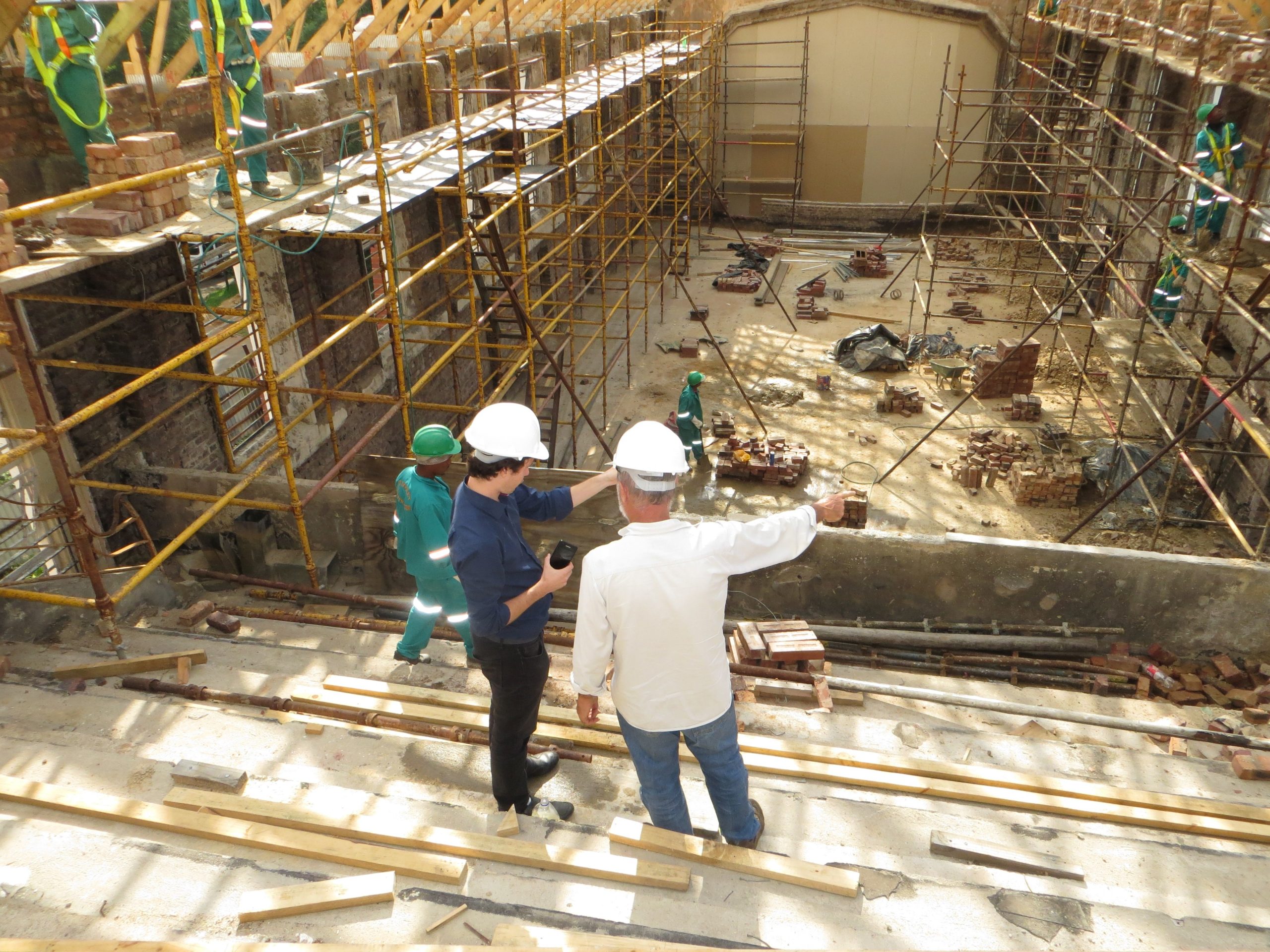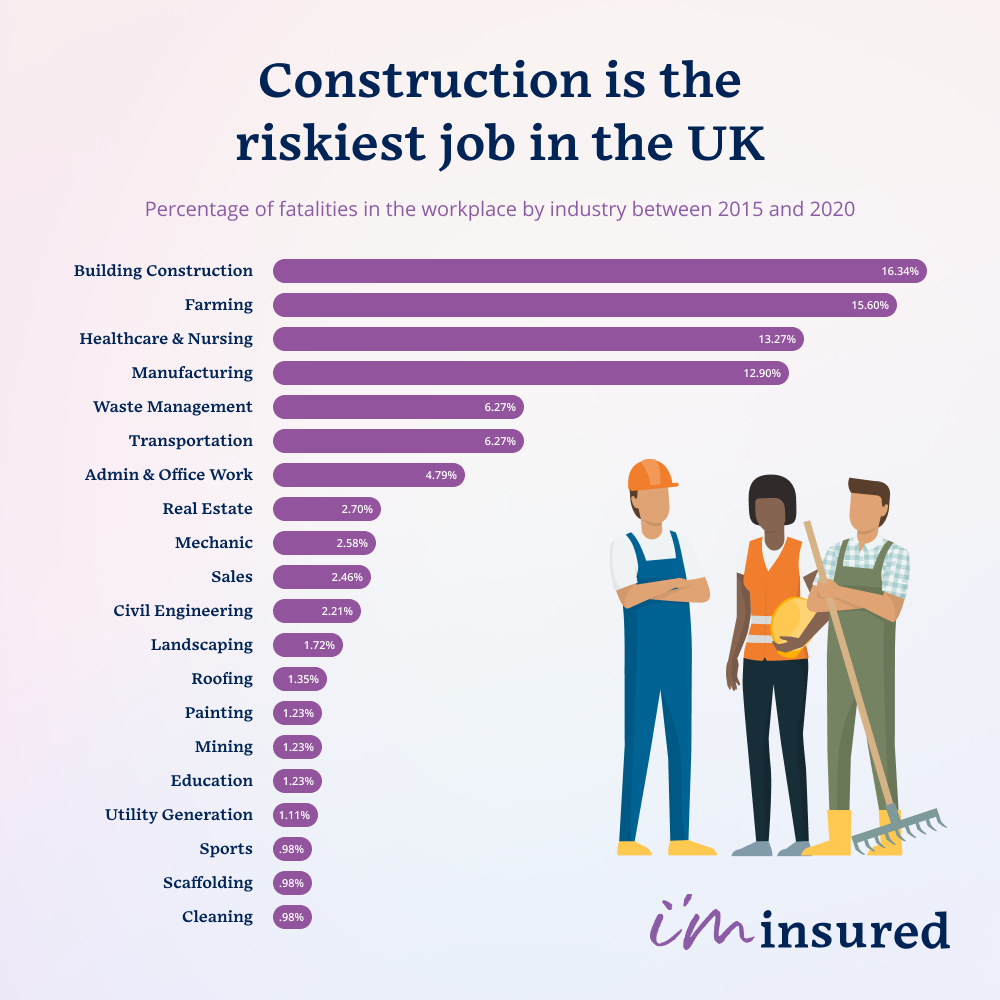
A new report has investigated the dangers that UK workers face across the country, revealing that construction is the most dangerous industry. It takes first place above a whole host of other occupations you might think are more risky, such as mining, rig work, farming, fishing, forestry, security, and firefighters.
The study by life insurance specialists, I’m Insured, analyses the latest HSE (Health and Safety Executive) data to reveal the most dangerous occupations, common causes of death and the age groups most at risk.
Report reveals the UK’s deadliest occupations – construction is the most dangerous
The data analysed by I’m Insured has revealed that construction is the most deadly industry for UK workers.

I’m Insured broke down the fatal data by industry, revealing that construction jobs are in fact, the deadliest. Over 5 years, there were 133 deaths in the construction workplace, and more than 1 in 6 overall deaths were attributed to this occupation.
Construction is inherently dangerous job due to a number of risk factors including, heavy equipment operation, heights and vehicles, and these are factors that few other sectors share.
While there have been significant improvements over the past few years in reducing construction injuries, it still remains high risk, accounting for the highest percentage of fatal injuries.
| Industry | % of Deaths (2015 – 2020) |
| Building & Construction | 16.34% |
| Farming | 15.60% |
| Healthcare & Nursing | 13.27% |
| Manufacturing | 12.90% |
| Waste Management | 6.27% |
| Transportation | 6.27% |
| Admin & Office Work | 4.79% |
| Real Estate | 2.70% |
| Mechanic | 2.58% |
| Sales | 2.46% |
| Civil Engineering | 2.21% |
Top 10 most likely causes of death in construction – falling from a height is the most fatal accident
Machines at height such as scaffolding, cranes and cherry pickers are all essential in the construction world, but they’re also the largest cause of fatalities in the workplace. Falling from a height accounted for 37% of work deaths in construction between 2015 and 2020.
Being tragically trapped under something collapsing in the workplace, or struck by an object are also some of the largest causes of death.
| Description of incident in construction workplace | Deaths (2015 – 2020) | % of Deaths (2015 – 2020) |
| Fell From Height | 49 | 36.84% |
| Trapped By Something Collapsing | 28 | 21.05% |
| Struck By An Object | 19 | 14.29% |
| Struck By A Moving Vehicle | 10 | 7.52% |
| Died Following An Explosion | 5 | 3.76% |
| Came Into Contact With Electricity | 5 | 3.76% |
| Struck By An Overturning Vehicle | 3 | 2.26% |
| Died Following A Fall | 3 | 2.26% |
| Came Into Contact With Something Fixed Or Stationary | 3 | 2.26% |
| Asphyxiated | 2 | 1.50% |
Fatal injuries by age in the construction workplace – 45-50 year olds most at risk
While the average age of the UK’s workforce is increasing, there are more fatal accidents in older workers than younger workers. It’s likely this is more prominent in the construction industry due to a decrease in new talent. The Construction 2025 report states this could be down to a perceived low image of working in construction, including thoughts of a lack of gender diversity, low pay and little job security.
| Age | Deaths (2015 – 2020) | % of Deaths (2015 – 2020) |
| 16-19 | 1 | 0.75% |
| 20-24 | 9 | 6.77% |
| 25-34 | 19 | 14.29% |
| 35-44 | 23 | 17.29% |
| 45-54 | 34 | 25.56% |
| 55-59 | 15 | 11.28% |
| 60-64 | 15 | 11.28% |
| 65 and over | 16 | 12.03% |
| Under 16 | 1 | 0.75% |
For more details on the report such as, the most common workplace accidents overall, the gender most at risk, and the jobs that make life insurance more expensive, you can view the full report here.
